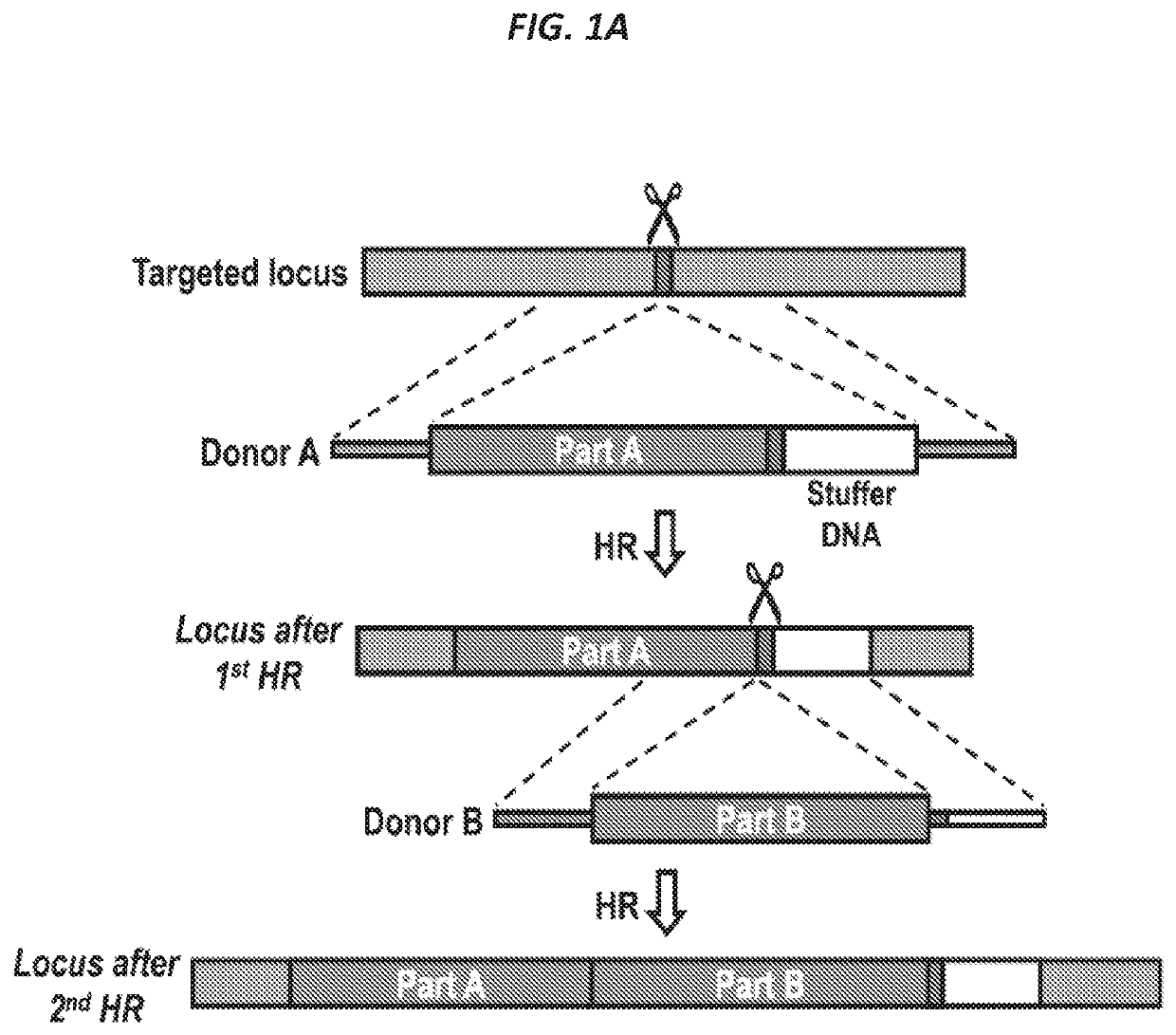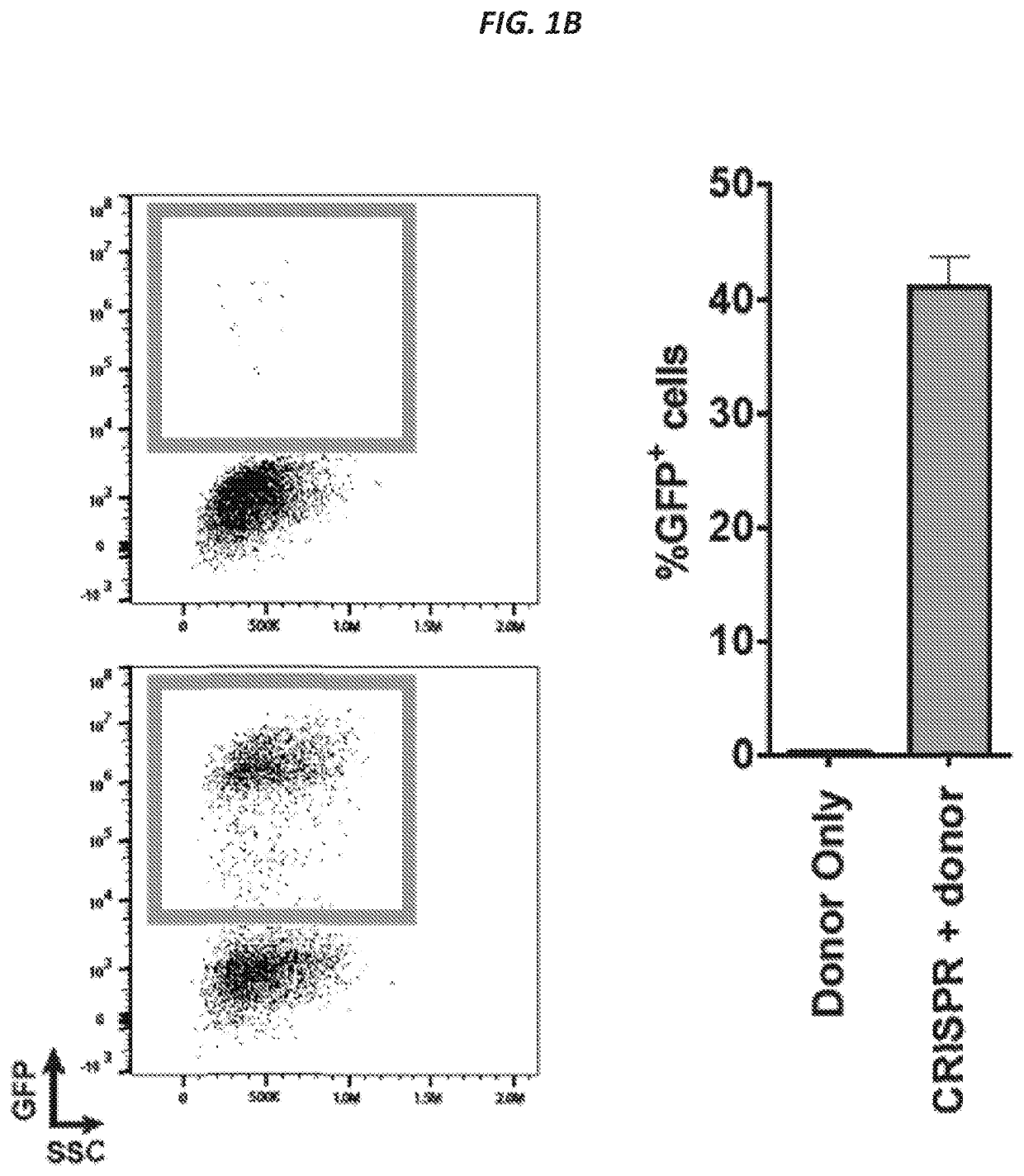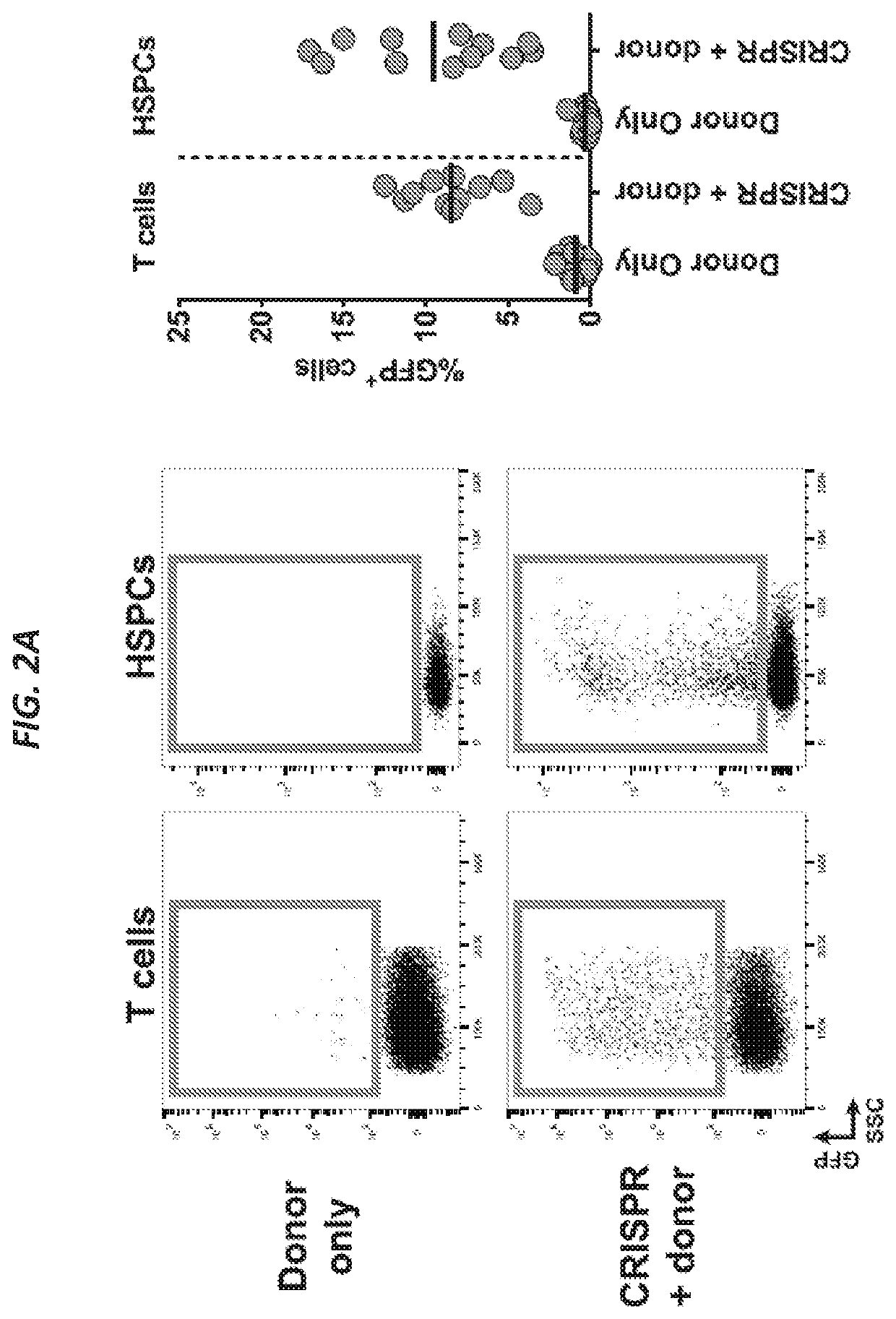Crispr/cas 9-mediated integration of polynucleotides by sequential homologous recombination of aav donor vectors
a technology of aav and polynucleotide, which is applied in the field of aav donor vector sequential homologous recombination of aav, can solve the problems of donor-dependent decrease of the extent of the donor-dependent decrease, and the failure to extend the packaging capacity of recombinant aav vectors 4.5 kb,
- Summary
- Abstract
- Description
- Claims
- Application Information
AI Technical Summary
Benefits of technology
Problems solved by technology
Method used
Image
Examples
example 1
diated Integration of Large Gene Cassettes Using AAV Donor Vectors
[0186]Detailed description of the Example can be found in Bak and Porteus, Cell Reports, 2017:20, 750-756, which is expressly incorporated herein by reference in its entirety, with particular reference to the results, discussion, experimental procedures, figures, legends, and references therein.
[0187]The CRISPR / Cas9 system has recently been shown to facilitate high levels of precise genome editing using adeno associated viral (AAV) vectors to serve as donor template DNA during homologous recombination (HR). However, the maximum AAV packaging capacity of ˜4.5 kilobases limits the size of the donor. Provided herein are systems and methods to overcome this constraint by showing that two co-transduced AAV vectors can serve as donors during consecutive HR events for integration of large transgenes. Importantly, the method involves a single-step procedure applicable to primary cells with relevance to therapeutic genome edit...
example 2
ersal Correction Using Split Strategy
[0248]The universal method for gene correction using the split strategy described herein includes three details: (1) the sgRNA, (2) the correction template, and (3) the delivery strategy.
[0249]For cystic fibrosis transmembrane conductance regulator gene (CFTR) correction, the DSB was induced in Exon 1 using sgRNA, e.g., a CFTR synthetic sgRNA (UUCCAGAGGCGACCUCUGCA; SEQ ID NO: 14). In the universal strategy, the correction template included a codon diverged CFTR sequence followed by a BGH poly-A tail, truncated-CD19 (tCD19) under the control of a PGK promoter and SV-40 poly-A tail. The PGK promoter-tCD19-SV40 cassette allowed for enrichment of successfully edited cells since CFTR is not expressed in sinus stem cells.
[0250]Furthermore, the universal template was delivered using two AAV donors. The first AAV virus contained 400 base pair (bp) left homology arm (LHA) consisting of 400 bp upstream of the DSB site, the first 2883 bp of the CFTR cDNA se...
PUM
| Property | Measurement | Unit |
|---|---|---|
| time | aaaaa | aaaaa |
| time | aaaaa | aaaaa |
| time | aaaaa | aaaaa |
Abstract
Description
Claims
Application Information
 Login to View More
Login to View More - R&D
- Intellectual Property
- Life Sciences
- Materials
- Tech Scout
- Unparalleled Data Quality
- Higher Quality Content
- 60% Fewer Hallucinations
Browse by: Latest US Patents, China's latest patents, Technical Efficacy Thesaurus, Application Domain, Technology Topic, Popular Technical Reports.
© 2025 PatSnap. All rights reserved.Legal|Privacy policy|Modern Slavery Act Transparency Statement|Sitemap|About US| Contact US: help@patsnap.com



